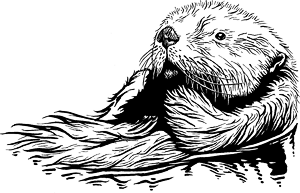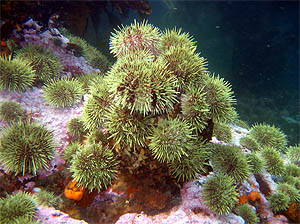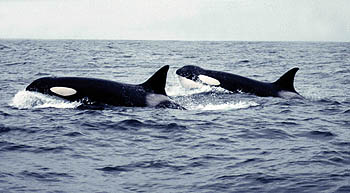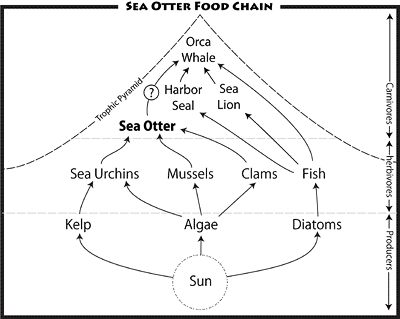On a summer day during the early 1990s, Jim Estes was in his skiff off the island of Shemya, searching for sea otters as he had done many times in the last 20 years. Despite the sometimes terrible weather, the Aleutian Islands were his favorite place in Alaska. He had first come here in the 1970s to study the otters and their ecosystem. He had suspected then that they played a very important role in that ecosystem. Although he now lived in California and taught at the University of California in Santa Cruz, he returned to the Aleutians again and again to continue his study.
When he first came to Alaska, there had been no otters anywhere near this island. They had disappeared from the Aleutian Islands by 1900, except for a few small groups far from Shemya. Sometime in the late 1980s or early 1990s, they had returned.
He stayed close to shore because he knew that otters could only dive and find their food on the bottom in shallow water. He began spotting otters. At the end of the day, when he tallied up all the groups of sea otters that he counted near Shemya, the numbers were relatively low. This is what he expected to find, however, for an area that had only recently been recolonized by the otters.
A few days later, he surveyed the waters around Amchitka, 250 miles to the east in the Rat Islands. Here, he expected to see large numbers of otters as he had in the past, even during the 1970s when he first began to study them. But today he was surprised. Where were all the otters? He made sure he was doing the same type of boat survey he had in the past. Something had changed.
His counts of otters near the islands seemed to confirm what the biologists who worked for the Aleutian Island National Wildlife Refuge had recently observed. In 1992, they had completed an extensive survey by airplane over the entire 500-mile stretch of the Aleutian Islands, and found much smaller numbers of otters compared to the last Aleutian Island-wide survey in 1965.
Here is what they found.The following chart shows information for all of the islands combined.
They also compared all of the otter counts and estimates for Amchitka (the Rat Islands) and Shemya (the Near Islands). This chart shows information for the island groups.
What had happened to all of the otters?

















